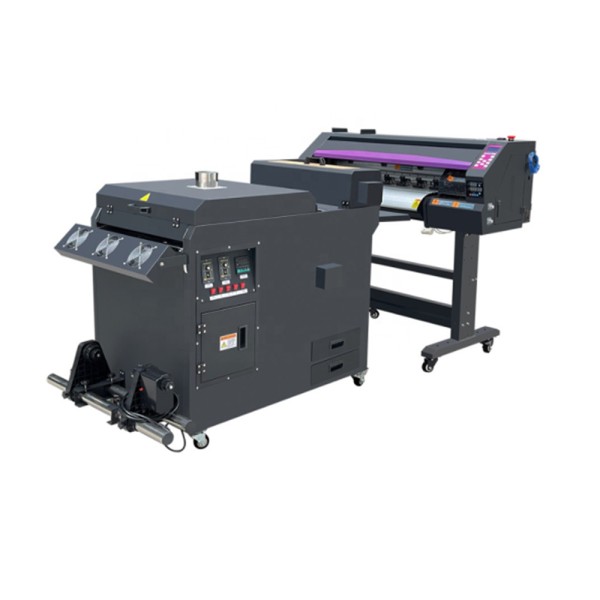Grasping DTF Printing: Tips and Techniques for Achieving Vibrant and Sturdy Prints
Worldwide of fabric printing, attaining durable and lively prints is a desirable skill that can raise the top quality of your output. Grasping DTF (Straight to Movie) printing calls for a blend of technical expertise, accuracy, and attention to detail. From choosing the appropriate materials to adjust print setups and perfecting post-printing finishing methods, there are countless factors that can influence the result of your prints. Comprehending just how to browse these intricacies can make all the difference between an average result and a genuinely exceptional one.

DTF Printing Essentials
For those brand-new to the globe of fabric printing, comprehending the basics of DTF printing is necessary to grasping this ingenious technique. Straight to Movie (DTF) printing is a modern-day technique that includes moving layouts from an unique film onto various fabrics utilizing a heat press. Unlike typical approaches like screen printing, DTF offers benefits such as dynamic shades, complex outlining, and the ability to publish on diverse products like cotton, polyester, and blends.
The process starts by publishing the style on a special DTF movie using a suitable printer with CMYK or CMYKW ink sets. As soon as the style is published, it is after that cured with a warm press to create a long-lasting and long lasting print. DTF printing is known for its capacity to recreate complicated layouts with high precision and shade accuracy, making it a prominent choice for organizations wanting to develop customized garments, promotional products, and more.
Selecting the Right Materials

The sticky powder acts as a bonding agent between the published style and the fabric, so it must have solid bond homes to guarantee a resilient and resilient transfer. By carefully selecting the best products for DTF printing, printers can improve the quality, vibrancy, and long life of their prints.
Optimizing Publish Settings
When aiming to achieve the finest outcomes in DTF printing, thorough attention to optimizing print settings is vital for ensuring accurate and premium transfers onto textiles. One essential element to take into consideration when maximizing print setups is the resolution.
While raising the rate can boost performance, it might endanger the last print's clearness and color saturation. Experimenting with different rates and observing the outcomes can assist figure out the ideal setting for each print work.
In addition, make improvements shade profiles and ensuring correct shade administration are vital for achieving regular and precise colors across various prints. By calibrating color setups and profiles, printers can minimize shade variances and produce consistent outcomes, enhancing the total print high quality and client complete satisfaction.
Preparing Art Work for DTF Printing
To make sure optimal outcomes in DTF printing, precise attention to information is important when preparing art work for transfer onto textiles. Begin by picking high-resolution pictures to keep clearness and sharpness in the last print. Vector graphics are preferred as they can be conveniently scaled without losing top quality. Convert the art work to CMYK color setting to ensure that the shades convert precisely from display to print. Change the shade levels and comparison as needed to improve the vibrancy of the design. When adding message to the art work, choose typefaces that are clear and appropriate for the desired size. Keep in mind to mirror the last design prior to publishing to guarantee that it moves correctly onto the garment. Furthermore, consider the textile type and shade when picking the artwork, as these aspects can influence the final look. By adhering to these steps and paying close interest to the information, you can prepare artwork that is enhanced for lively and durable DTF prints.
Post-Printing Finishing Methods
Carrying out reliable post-printing ending up strategies is crucial to enhancing the toughness and aesthetic appeal of DTF prints on fabrics. As soon as the printing procedure is full, using warm to the published style is necessary (DTF Printing). Warm not only aids in curing the ink but also makes certain that the shades are durable and lively. click A warm press device evaluated the recommended temperature level and stress setups can assist achieve optimal outcomes.
When the movie is eliminated, the print might require added curing time to better set the ink right into the textile. This step aids enhance the washability and longevity of the print, ensuring it can stand up to multiple laundry cycles without fading or breaking.
Additionally, trimming any kind of excess film around the style can offer the final print a clean and expert look. Putting in the time to correctly end up DTF prints post-printing can significantly affect the total quality and longevity of the fabric layout.

Verdict
To conclude, grasping DTF printing needs a thorough understanding of the basics, choosing proper products, maximizing print settings, preparing artwork efficiently, and using post-printing completing strategies. By adhering to these tips and techniques, one can attain vivid and durable prints that satisfy their preferred high quality requirements. Constant method and interest to detail are necessary in attaining effective results in DTF printing.
From picking the appropriate products to adjust print setups and improving post-printing ending up methods, there are many aspects that can influence the outcome of your prints. Unlike conventional techniques like screen printing, DTF provides advantages such as vibrant colors, detailed detailing, and the capacity to publish on varied products like cotton, polyester, and blends.
When the style is printed, it is then important site healed with a additional reading warmth press to develop a lasting and resilient print.When aiming to attain the ideal results in DTF printing, careful interest to optimizing print settings is crucial for making certain premium and precise transfers onto fabrics.In final thought, mastering DTF printing needs an extensive understanding of the fundamentals, selecting ideal products, optimizing print setups, preparing artwork effectively, and making use of post-printing completing strategies.
Comments on “A Deep Dive into DTF Printing: Techniques, Advantages, and Sector Applications”